Cubism Revival & Arizona Artist Joshua Woodhall
From the late great masters to the new artists emerging on the scene, cubism remains a thriving artistic style.
Cubism is a combination of organic elements and geometric forms placed together in a way that symbolizes both the subconscious mind and alternate dimensions while still being grounded in the physical world.
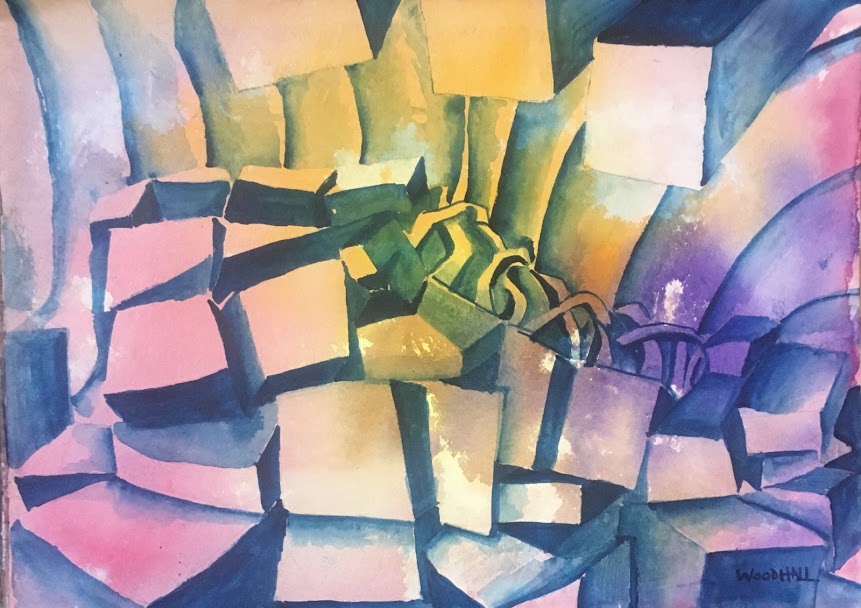
In Tucson, Arizona artist Joshua Woodhall creates cubism paintings using watercolor. Walking into his art studio at the Sculpture Resource Center, a community of talented artists and sculptors, you will find an outstanding amount of his cubist style paintings covering the walls of his studio and lining the halls of the art gallery.
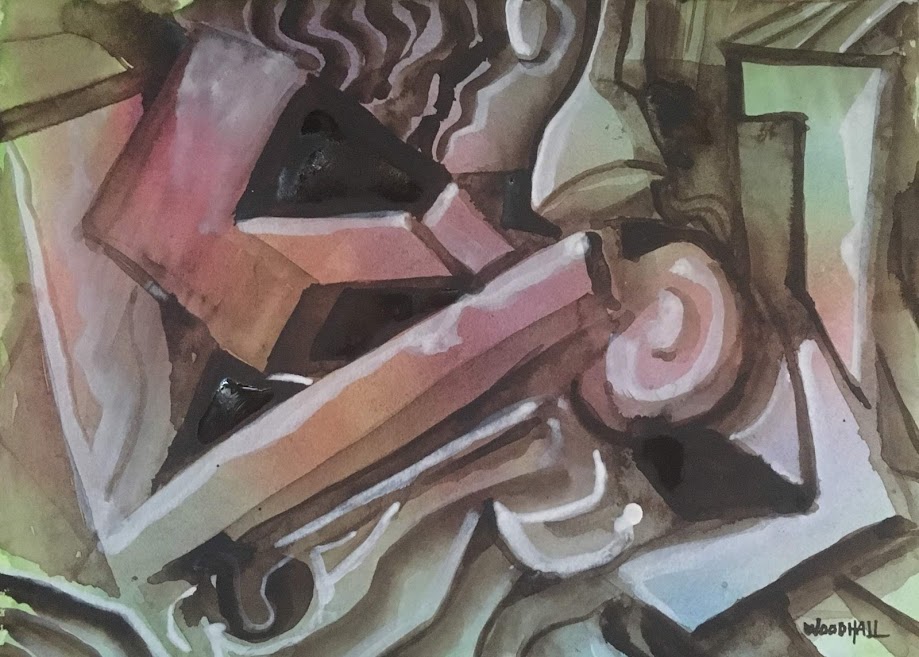
His roots began as child when his grandmother asked him to paint a still life of an apple in the middle of the table using oil paint. Several years later, shortly after his grandmother passed away, he acquired her paints and he and his mother took a watercolor class together.
At the age of 10 and beyond, he focused on realism – not really grasping nor admiring abstract artwork. He admired the masters of realism like Caravaggio.
As his tastes started to change, he began to thoroughly delve into artwork by the well-known pioneers of cubism such as Braque and Picasso. He began to have a different philosophy on the artists after exploring their history, their artwork and the style of cubism for himself.
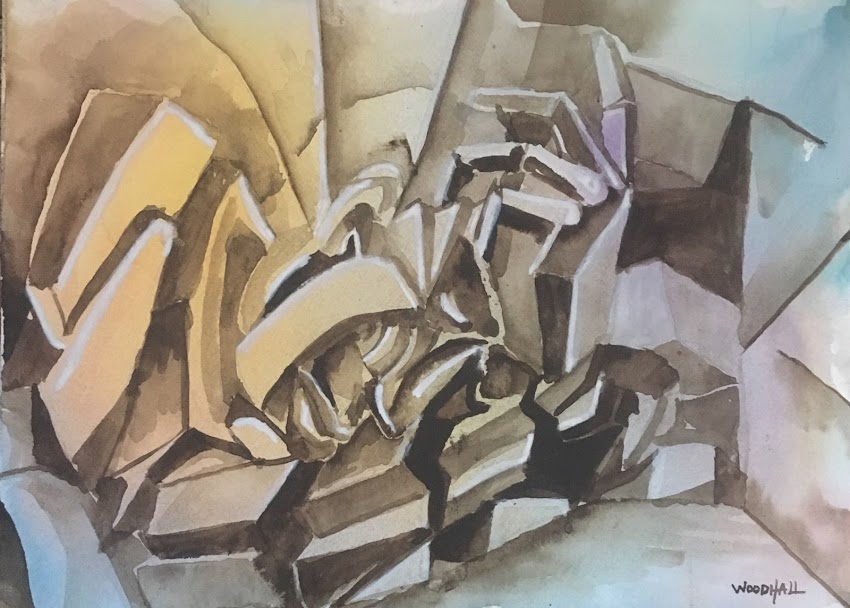
“First of all, I think cubism was created by Braque because Picasso was known for his studio hopping, gathering ideas and tweaking them to his style. Perhaps, together, they came up with it. But it wasn’t the portrait painting Picasso’s sole invention. Secondly, I believe that its intention was nothing more than to put organic shapes into geometric formations. After this is done, it automatically brings to mind concepts of further dimensions such as time and space dilation. Furthermore, this lends to exclude the majority from attempting to grasp it. It certainly did for me as a young artist. When I considered it wasn’t so complex, I was able to accomplish an approximation of cubism, and outcame those ideas,” explains Woodhall.
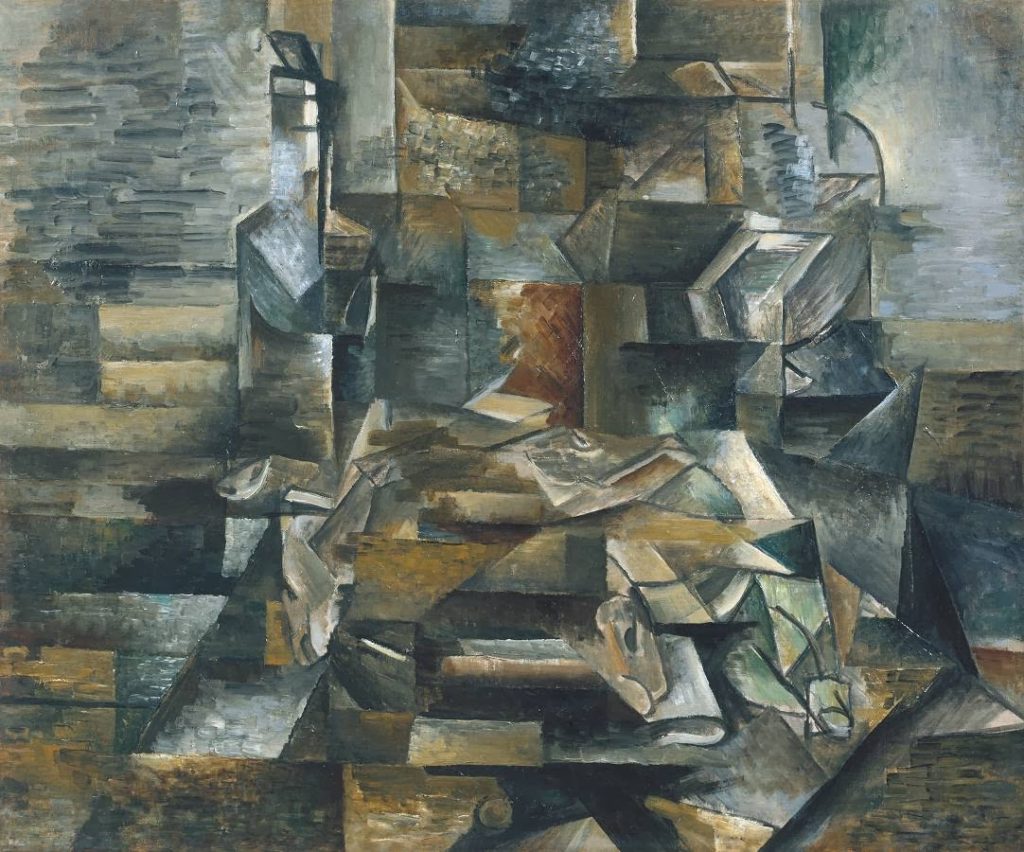

The importance of abstraction, as opposed to realism, is that abstraction delves into the subconscious. Abstraction explores both conscious reality and subconscious reality simultaneously.

Woodhall simplifies the understanding of cubism for future artists wanting to explore cubist style.
“Every teacher I’ve had has made cubism seem complicated but its not some great mystery. Turning something organic into something geometric. In doing that, you make it deeper. You make it mean something it could never mean otherwise.”
Some of his inspiration comes from the “clean” style of cubist artists such as
Lyonel Feininger and the more fluid cubism of artists such as the futurist painters in Italy.
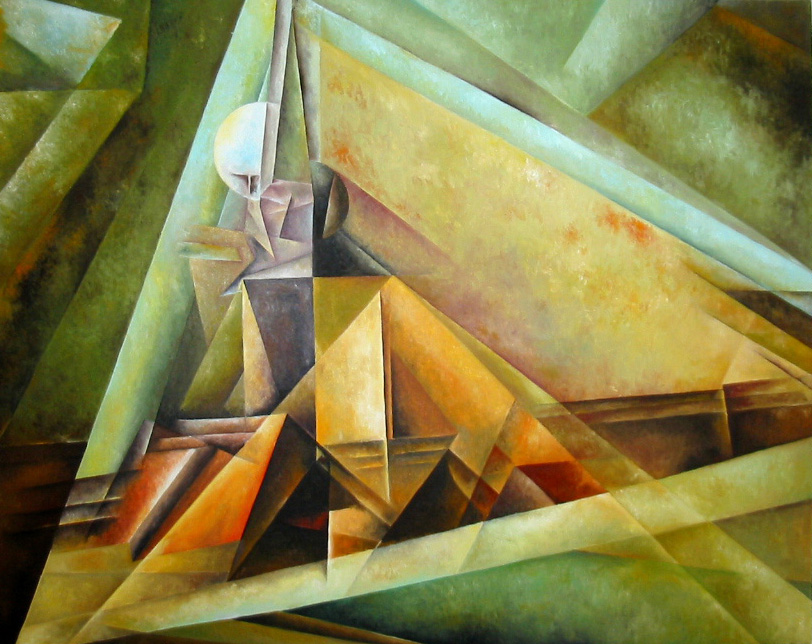
“Visiting Italy, I saw artists like the Italian Futurists, who painted cubism clean yet fluid, similar to my style using organic elements,” says Woodhall.
His use of watercolor in cubism is an innovative approach that is not often seen in cubism artwork.
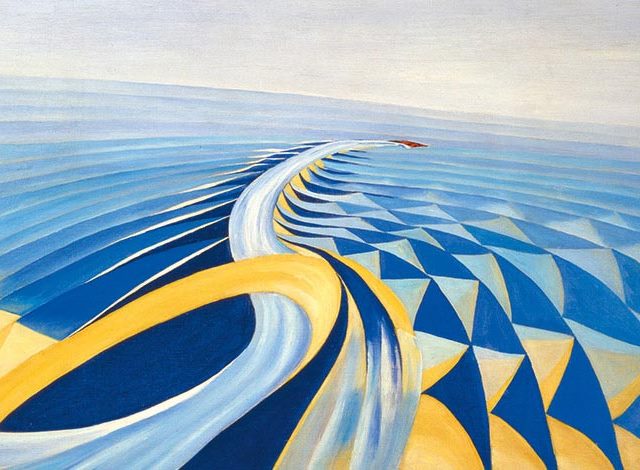
“Watercolor is perfect for cubism because you have more flexibility with the gradients. With other mediums you can change your color but you can’t really thin your paint enough to give it the effect you want. People are often afraid of watercolor because they think it’s so uncontrollable but you can actually control it a lot. There are tons of techniques you can do that you can’t do using other mediums,” says Woodhall.
Woodhall takes a grassroots approach to selling and displaying his artwork. However, he has shown his work in several galleries throughout Arizona including an annual art show for the last 10 years in his hometown of Tucson.
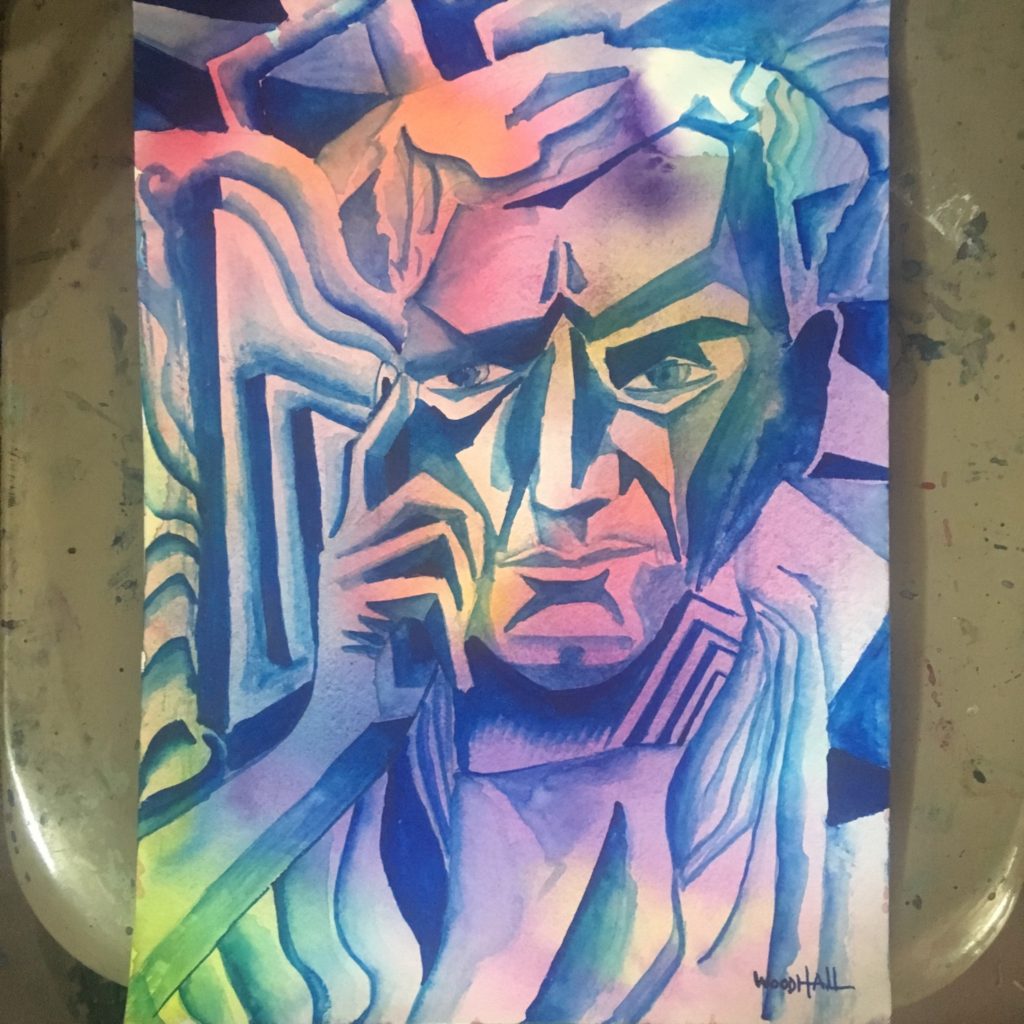
His art studio at the Sculpture Resource Center hosts art receptions, events and workshops. Woodhall will be facilitating a watercolor workshop teaching various techniques, including his approach to cubism, in the foreseeable future.